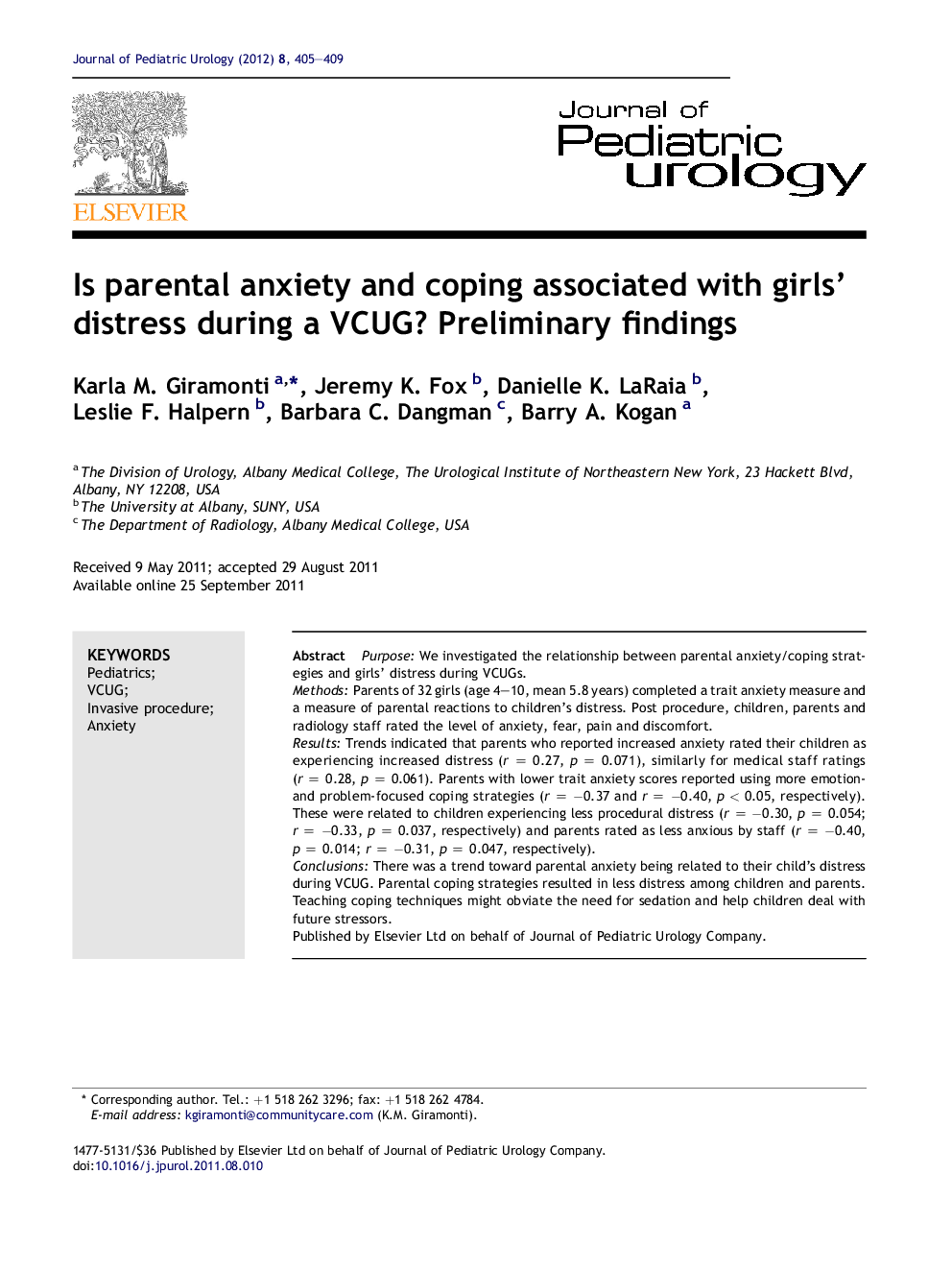| Article ID | Journal | Published Year | Pages | File Type |
|---|---|---|---|---|
| 4162801 | Journal of Pediatric Urology | 2012 | 5 Pages |
PurposeWe investigated the relationship between parental anxiety/coping strategies and girls’ distress during VCUGs.MethodsParents of 32 girls (age 4–10, mean 5.8 years) completed a trait anxiety measure and a measure of parental reactions to children’s distress. Post procedure, children, parents and radiology staff rated the level of anxiety, fear, pain and discomfort.ResultsTrends indicated that parents who reported increased anxiety rated their children as experiencing increased distress (r = 0.27, p = 0.071), similarly for medical staff ratings (r = 0.28, p = 0.061). Parents with lower trait anxiety scores reported using more emotion- and problem-focused coping strategies (r = −0.37 and r = −0.40, p < 0.05, respectively). These were related to children experiencing less procedural distress (r = −0.30, p = 0.054; r = −0.33, p = 0.037, respectively) and parents rated as less anxious by staff (r = −0.40, p = 0.014; r = −0.31, p = 0.047, respectively).ConclusionsThere was a trend toward parental anxiety being related to their child’s distress during VCUG. Parental coping strategies resulted in less distress among children and parents. Teaching coping techniques might obviate the need for sedation and help children deal with future stressors.
